Ledao did receive a lot of orders, so some of its competitors began to stab it in the back.
In a live broadcast event two days ago, Ledao CEO Ai Tiecheng expressed his helplessness, while Xia Qinghua, the head of user and service operations, stood aside with his back to the audience, with seven band-aids on his clothes. The meaning was clear: someone was stabbing him in the back.

The next day, NIO Chairman Li Bin also talked about this matter. He said that it was originally agreed that the “six major factions” would attack Model Y together, but Ledao was stabbed five times by competitors. “Ledao Tiecheng was very angry,” Li Bin added, “I told him that being attacked by competitors is better than no one paying attention to him. He had never seen such a scene before.”
As for which competitors they were, neither Li Bin nor Ai Tiecheng said it clearly. Xia Qinghua complained, “I dare not even mention some of the names. They all sent a message to cancel their subscription to Ledao and buy something from someone else.”
In today’s new energy market in China, dealing with public opinion wars and communication wars has long become a daily routine for the public relations and marketing departments of auto companies. But as Li Bin said, Ai Tiecheng, who once worked at Shanghai Disney and WeWork and has only been in the automotive industry for a few years, has indeed rarely seen such a scene. He also raised doubts during the live broadcast as to whether a competitor had “misfired.” Xia Qinghua on the side said, “Those words named names, it doesn’t seem like a misfire.”
Overall, the “black spots” that people like to talk about on the Internet are nothing more than these:
- BaaS power rental scheme is a pure scam
- You use double ball joint McPherson, you are guilty
- Whatever you say, just buy a Tesla
- Buy Ledao? You just can’t afford Weilai
No one can refute the latter two unreasonable arguments, nor is there any need to refute them. Cars are just commodities. The most important thing is personal preference and actual needs, not the opinions of others.
However, the first two “black spots” are worth discussing in detail, especially the first point: how should the electricity bill for renting be calculated?
Ledao’s explosion in popularity is inevitable
The reason why a new product is attacked by competitors is simply that its product strength has caused a big enough impact on the market.
Although NIO has not officially released specific order data, its actual sales situation can still be traced at the terminal. The sales report released by Sun Shaojun pointed out that the large-volume sales of Ledao L60 have skyrocketed after its launch. Within 72 hours, the number of locked orders exceeded 30,000, and the conversion rate of pre-sale orders was as high as 30-35%.
The user profile of L60 is pure family users around 30 years old, among which the replacement rate reaches 50-60%, and the proportion of gasoline vehicles is extremely high. It is worth noting that customers who come to the store usually bring their children to see the car. Users who recognize the values and battery replacement model of Ledao and Weilai and choose the BaaS battery rental plan account for 70%.
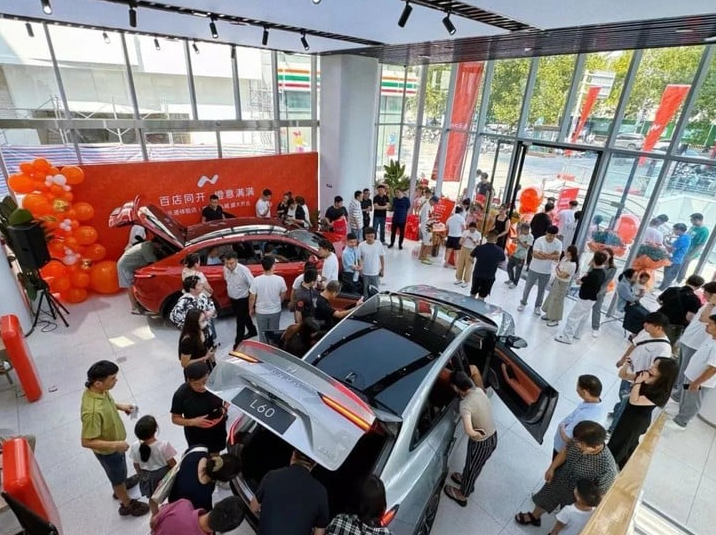
At the same time, the high proportion of standard-range models can also reflect consumers’ recognition of the battery replacement and leasing model to a certain extent. 90% of users chose the standard-range version with a battery capacity of 60kWh. However, this is also related to the longer waiting time for the long-range version (85kWh battery).
According to Li Bin’s previous estimate, only 5,000 L60s can be produced in October, 10,000 in December, at least 16,000 in January next year, and 20,000 in March next year.
There is no need to worry that Ledao will not be able to sell so many cars. In Li Bin’s words, Ledao is currently in a state of “exploding orders”. “The (NIO App) server is still a bit stuck after expanding its capacity five times.”
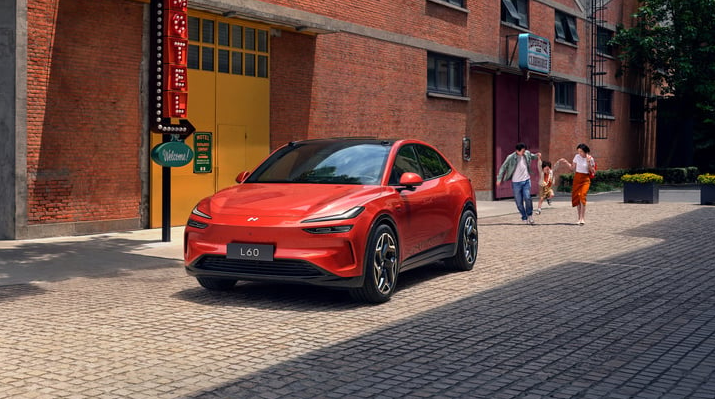
The popularity of Ledao L60 is inseparable from its pricing and BaaS battery rental plan.
Remember in March this year, when NIO released its fourth-quarter financial report for 2023, Li Bin made it clear that the first priority of Ledao (then called “Alps”) was to make money, and the brand’s vehicle gross profit margin target was therefore set at 20%. But he also mentioned that in the early days of Ledao’s listing, in order to open up the market, some gross profit needed to be sacrificed.
Because of this, we can now see the L60 starting at 206,900 yuan, which is 43,000 yuan cheaper than the starting price of its competing model Tesla Model Y. You should know that about 60% of consumers who come to the store to see Ledao are comparing it with Tesla Model Y. Even the long-range version equipped with an 85kWh battery only costs 235,900 yuan (28,12,557.85 INR).
Although the 18-speaker system of Ledao L60 actually sounds similar to that of Model Y, it has significant advantages in comfort, energy consumption, battery life, and intelligence.

That’s right, the front suspension of the Ledao L60 uses a double-ball joint McPherson, and its steering accuracy and dynamic stability are not as good as the Model Y. But for the L60, an SUV for family users, these are not problems at all, because it not only has “sacrifices” but also “gains”.
As early as four months ago, Li Bin had already introduced the benefits that the suspension system brings to the cabin space. The L60’s minimum turning radius of 5.4 meters is also significantly better than most SUVs of the same price.
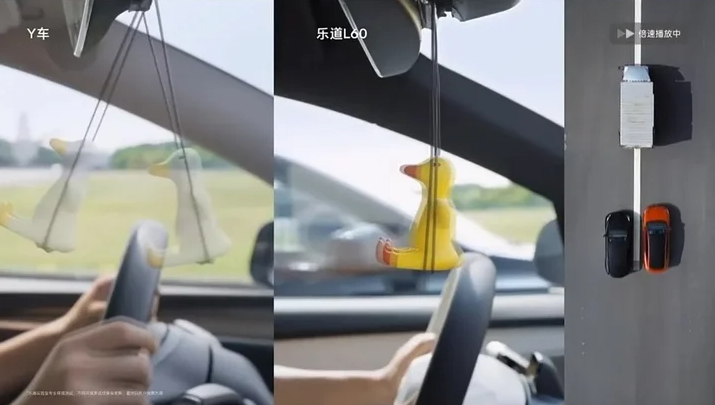
At last week’s press conference, Ledao also intuitively demonstrated the pitch suppression capability and shock absorption performance of the L60 chassis. Ai Tieben himself also said: “Everyone go and try our product to see if it meets the feeling you want.”
But we all know that test driving has a cost, which provides an opportunity for those with bad intentions to take advantage of it.
To increase store visit rate, the most important thing is price.
On top of the already competitive pricing, Ledao also prepared a power rental plan, which directly reduced the starting price of L60 to 149,900 yuan, greatly reducing the user’s first payment cost. Not only that, due to the different battery specifications, the rental fee of L60 is also much lower than that of the NIO brand.
In March this year, NIO significantly reduced the monthly rental fee for its BaaS service. The monthly rental fee for a 75kWh battery was reduced from 980 yuan to 728 yuan; the monthly rental fee for a 100kWh battery was reduced from 1,680 yuan to 1,128 yuan, and the monthly battery insurance fee of 80 yuan was also canceled.
The monthly rental for the two batteries of Ledao L60, one small and one large, is 599 yuan and 899 yuan respectively.
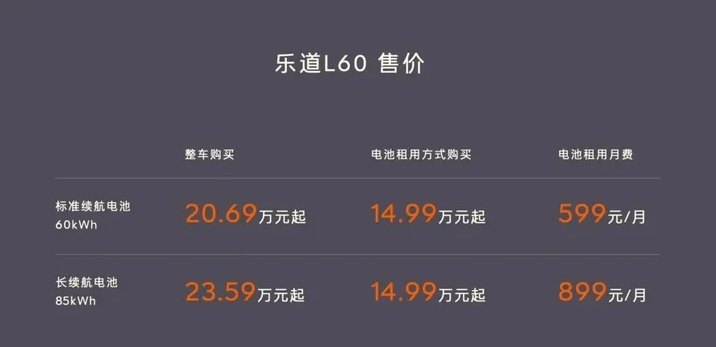
If you are a large deposit user before October 8, you can also get a “pay 4 in 5 years and get 1 free” benefit. On average, the rent of 599 yuan becomes 479 yuan; the rent of 899 yuan becomes 719 yuan. In Li Bin’s words: every month is the cost of a tank of gas.
For many gasoline car users, this sentence is very attractive. In the first- and second-tier cities currently served by Ledao stores, two tanks of gas a month are often the norm due to the long commuting distance. These cities usually have a relatively complete battery replacement network, so it is not surprising that as many as 70% of users choose to rent electricity.
In terms of the number of battery swap stations, Ledao is a true “rich second generation”. As a new brand, it has 304 battery swap stations and 23,000 self-built charging piles when it goes public. Ledao also stated at the press conference that by the end of the year, the number of battery swap stations available to the Ledao brand will exceed 1,000 (renovation of third-generation stations + construction of fourth-generation stations).
Ai Tiecheng is very confident about the battery-swapping experience. He said in the live broadcast that if the fast charging speed can exceed the battery swapping speed within 10 years, he will give away all Ledao models in his personal name.
How to calculate the bill for renting electricity?
From 2019 to now, the concept of BaaS (Battery as a Service) has been born for 5 years, and the online war of words about it has also been going on for 5 years. Even now, some people still think that this is a complete scam.
Li Bin has actually introduced the advantages of the BaaS solution many times. Even without his introduction, after four years of actual application, the cost-saving benefits of this solution for users are also very obvious.
So, for those users who are interested in purchasing Ledao L60, how do they decide whether leasing electricity or buying it outright is more suitable for them?
In fact, this is determined by the years of use and the amount of the down payment. Among them, the amount of the down payment varies from person to person, and factors such as loan interest rate, deposit interest, and financial management income are not included in the calculation scope of this calculation.
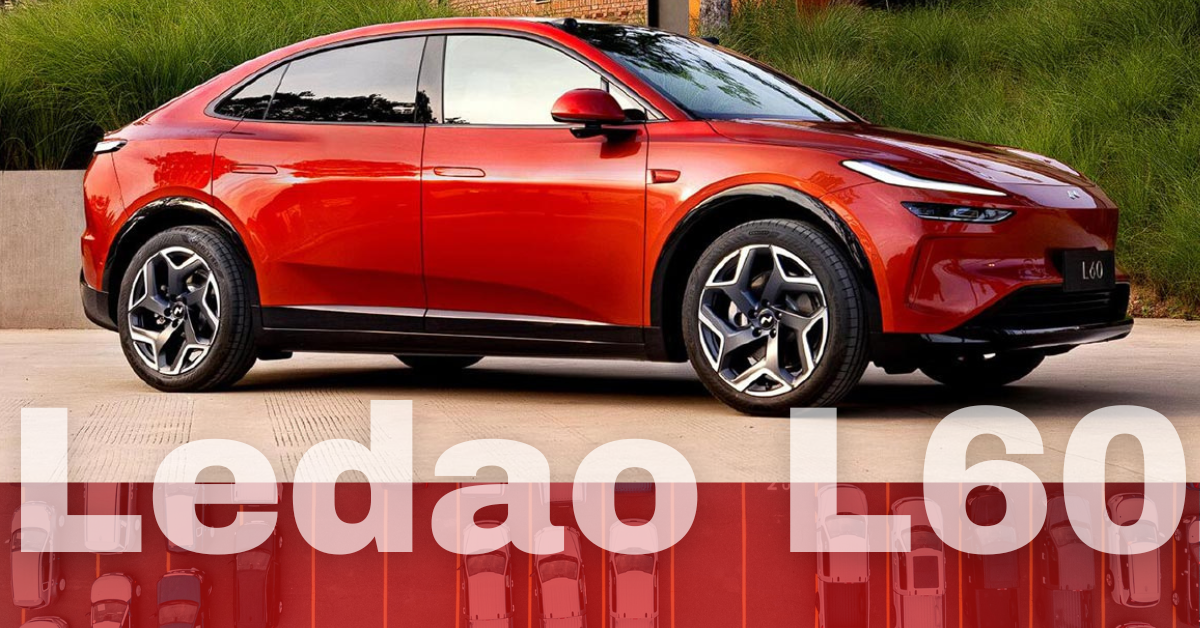
Let’s assume that you have 206,900 yuan and want to buy a standard-range version of L60 before October 8.
If you buy the car outright, the price is 206,900 yuan; if you use the BaaS solution and use the car for 5 years, you need to pay:
149900+599*48=178652
The difference compared to a direct buyout is 28,248 yuan. At this time, you can choose to change the car.
There is also a second option, which is to buy out the battery, but this will be a little more expensive.
Due to the car purchase tax policy, BaaS users can transfer the purchase to an outright purchase one year after the car purchase invoice date.
From the 13th to the 60th month, that is, the second to the fifth year after the purchase of the car, the standard range version can be deducted 360 yuan for each month of leasing, and the long-range version can be deducted 560 yuan. The battery buyout fee = the battery discount price (57,000 yuan) – the deductible part of the rental.
For example, for BaaS standard range users before October 8, the amount they need to pay to buy out the battery after 5 years of purchasing the car is:
57000-[360*(48-10)]=43320
The number 10 represents the 10 months of rent waived (from the 13th to the 60th month) under the “pay 4 get 1 free within 5 years” benefit.
That is to say, even if you don’t want to sell the car after five years, you can still buy out the battery for 43,320 yuan. After all the operations, the car costs you a total of 221,972 yuan, which is 15,072 yuan more expensive than buying it out. This money is equivalent to the interest on the 5-year loan. If you want to use it for five to ten years, it is better to sell it out.